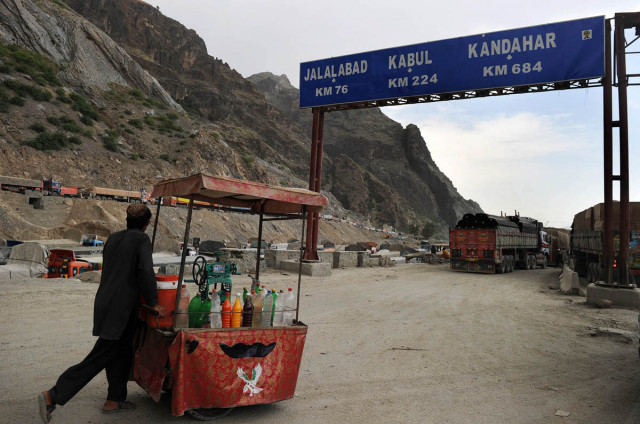PM Imran green-lights €250m ATT containers scanning project
Afghan Transit Trade project to be completed by December 2020

Pak-Afghan border Torkham. PHOTO: AFP
According to a Federal Board of Revenue senior officer, the project was planned under previous government’s tenure. However, the PM has approved the project in a special meeting on Sunday after which it would be initiated.
The project would be completed in three phases by December 2020 and the pilot operation would kick off in April 2020. Under the project, special scanners would be installed at all crossing points and custom clearing stations used for trade, including Torkham and Chaman border.
A special committee has been set up to prepare and forward the project’s PC-1 for approval.
According to documents provided to The Express Tribune, the decision to constitute a special committee headed by Federal Board of Revenue officials has been taken in a special meeting chaired by the PM. The committee comprised of the members from commerce, finance, information technology, telecom and other ministries concerned.
Under the project, special scanners would be installed at all border-crossing points and custom clearing stations to perform information technology integration.
In the first phase of the project, three scanners would be installed at South Asia Pakistan Terminal Port (SAPT), Torkham and Chaman borders.
Subsequently, four scanners at Karachi Port Terminal (KPT), one scanner each at Torkham and Chaman check points and two scanners at Gwadar port would be installed in the second phase of the project by June 2020.
The third phase of the project would complete by December 2020 under which one scanner would be installed at each crossing point — Ghulam Khan, Kharlachi and Lahore — and two scanners would be installed at Sust border.
The documents also revealed the supervisory committee would administer a survey for installation of fiber optic cable connection for all exit points after installation of special scanners.
After the completion of the project, all imported goods containers from Iran and India would also undergo a mandatory scanning on the ports. Currently, 40 per cent of the imported containers at the sea ports were being cleared via green and orange lines but after the completion of the project 100 per cent containers would get clearance from the scanning points, said the FBR official.
“The primary objective of the project is to halt illegal activities and smuggling of goods through Afghan Transit Trade,” he said.



















COMMENTS
Comments are moderated and generally will be posted if they are on-topic and not abusive.
For more information, please see our Comments FAQ